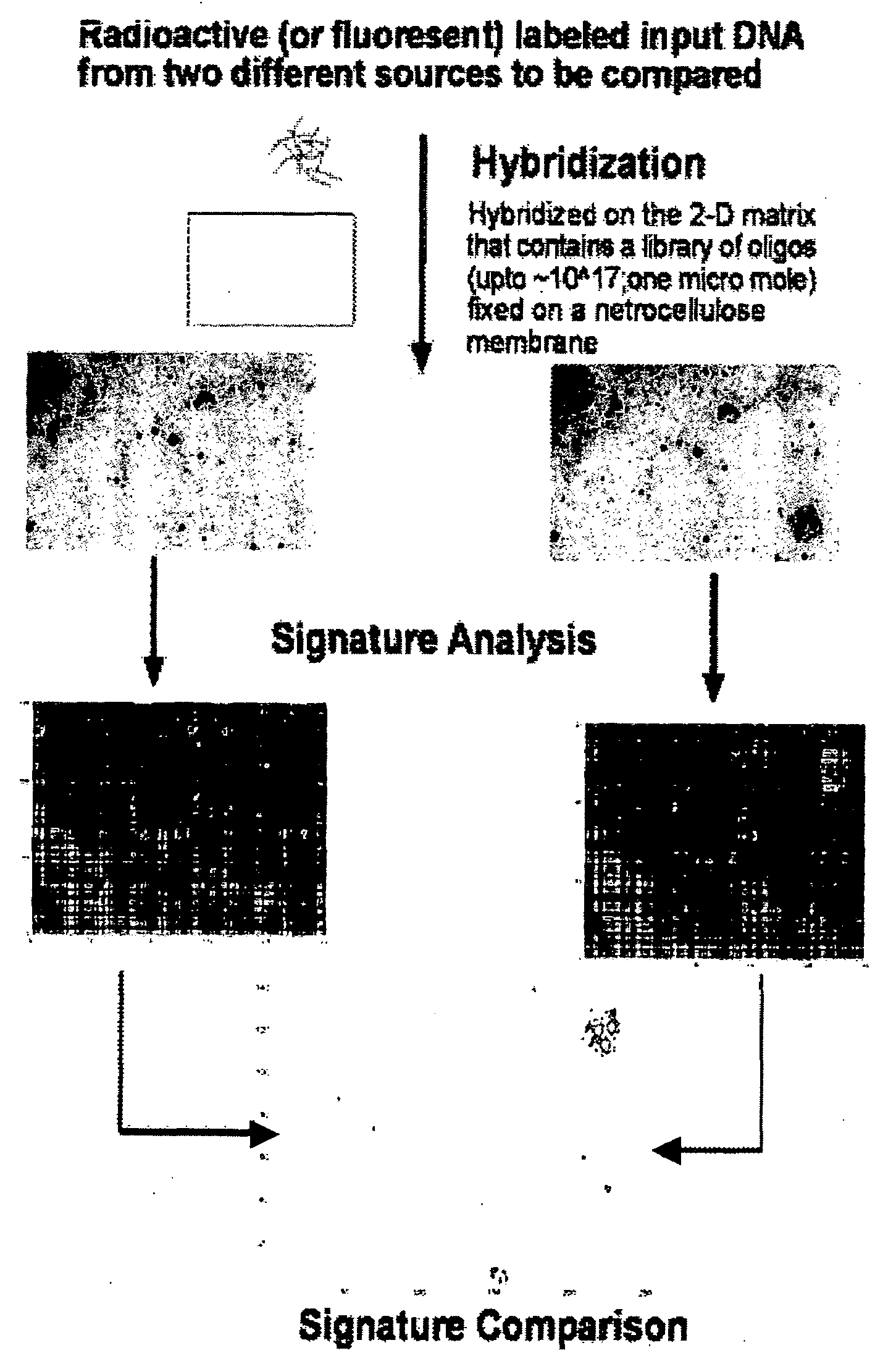Oligonucleotide matrix and methods of use
a technology of oligonucleotide matrix and method, applied in the field of compounding and methods for performing nucleic acid analysis of organisms, can solve the problems of unnecessarily inaccurate, narrow scope, time-consuming, laborious or expensive, knowledge of gene sequences, etc., and achieve the effect of accurate and efficient us
- Summary
- Abstract
- Description
- Claims
- Application Information
AI Technical Summary
Benefits of technology
Problems solved by technology
Method used
Image
Examples
example 1
Universal Oligonucleotide Matrix
[0098]The first step in building the universal oligonucleotide matrix with up to 1017 oligos having from about 30 to 60 nucleotides is to prepare the duplex DNA library contains that many different sequences. As illustrated in FIG. 2, ssDNA oligonucleotides are synthesized having (in this example) 60 nucleotides-40 nucleotides of designed random sequences at its 5′ end and a 20-mer long fixed sequence at the 3′ end that is served as the primer site to convert this machine synthesized ssDNA-library to a dsDNA-library. The number of the different sequences in each library is limited by the DNA synthesizer machine. The current limitation for each synthesis of most DNA synthesizer is about one micro mole which is about 6×1017 DNA molecules.
[0099]There is a great degree of freedom in the design of the contents of each oligonucleotide library. As such, in certain embodiments, the matrix includes the use of oligo libraries that contain variations in sequence...
example 2
Two-Dimensional Universal Oligonucleotide Matrix
[0122]The principle of the approach is to create a two-dimensional matrix with about 1018 oligonucleotides of 30- or 40-mers (FIGS. 2-7). In an exemplary model, the process is as follows (See FIG. 2): First a single-stranded oligonucleotides are synthesized—from about 30 to about 60-nucleotides long, containing a random sequence at its 5′ end and a 20-mer fixed sequence at the 3′ end that serves as the primer site to provide for conversion of the ssDNA library to a dsDNA library. The number of the different sequences in this library may be limited by the DNA synthesizer employed. For example, the current limitation is about 1 micromole which is about 6×1017 DNA molecules, thus being the upper limit of the different sequences from the two-dimensional matrix of the invention. However, it is expected that the technology will improve with time and greater oligo libraries will be possible.
[0123]After converting the approximately 1018 oligon...
PUM
| Property | Measurement | Unit |
|---|---|---|
| pH | aaaaa | aaaaa |
| temperature | aaaaa | aaaaa |
| nucleic acid analysis | aaaaa | aaaaa |
Abstract
Description
Claims
Application Information
 Login to View More
Login to View More - R&D
- Intellectual Property
- Life Sciences
- Materials
- Tech Scout
- Unparalleled Data Quality
- Higher Quality Content
- 60% Fewer Hallucinations
Browse by: Latest US Patents, China's latest patents, Technical Efficacy Thesaurus, Application Domain, Technology Topic, Popular Technical Reports.
© 2025 PatSnap. All rights reserved.Legal|Privacy policy|Modern Slavery Act Transparency Statement|Sitemap|About US| Contact US: help@patsnap.com



